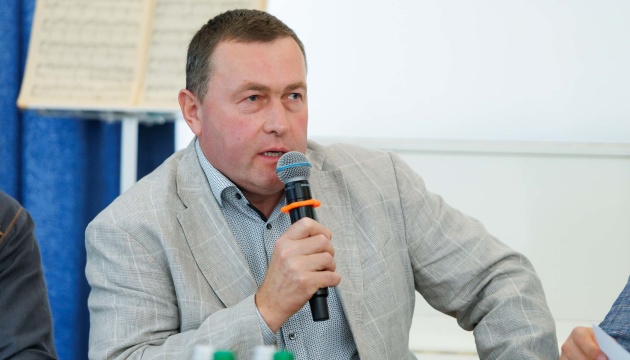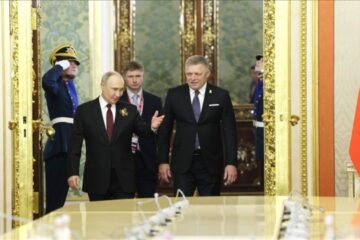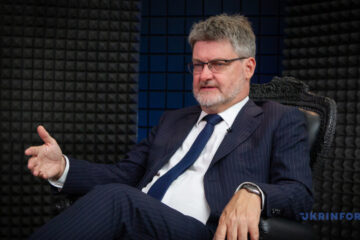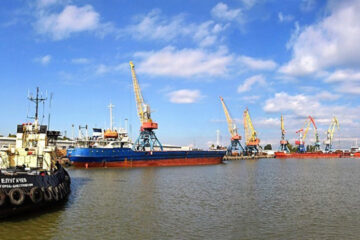The full-scale invasion of Ukraine by the Russian Federation has caused a reset of the global arms market. The frenzied demand for high-precision, highly technological weapon products has fueled a shortage of production capacities around the world. Ukraine was among the Top Ten of the world’s largest arms exporters until 2014, with annual sales exceeding USD 1 billion and a long list of orders placed and confirmed for future supplies over 5-6 years.
By varying estimates up and down, Ukrainian defense industries have the potential to put out at least USD 40 billion worth of products annually. Meanwhile, government financial resources are able to absorb only a part of these volumes, thus hindering the defense industry’s growth and development due to shortage of funding. With this in mind, the industry has recently increasingly raised the issue of partially opening up controlled exports of its products. Discussions around this sensitive issue are fierce. Ukrinform witnessed one such during report presentation titled “The International Arms Market and the Ukrainian Defense Industry’s Export Market Potential,” which was organized and held by the Ukrainian Institute for the Future at the request of the Council of Ukrainian Arms Manufacturers (CUAM).
After the presentation, Ukrinform had the opportunity to ask Serhiy Halushko, one of the authors of the report and director of defense programs at the CUAM, a few questions about the potential market interest in the weapons that are currently undergoing their most effective battlefield testing.
– Against the backdrop of heated debates about the feasibility of renewing defense exports from Ukraine, I would like to ask which products are of most interest to potential customers, and what our manufacturers are ready to offer the market?
– Let’s look at the issue in a broader context: Today, the Ukrainian defense industry can, in a certain way, shape the agenda on the international market. It is not only about the “traditional” export of specific types of weapons, but also about the export of expertise, know-how, technology, and armament products integrated into systems and complexes, for example, for reconnaissance-strike or reconnaissance-fire roles.
We can generally talk about the export of “turnkey” security solutions for a specific industry or a specific country or group of countries, for example, the Global South or another region. We have all the prerequisites for this. And in this case, specific weapon products are of secondary importance, because they will only comprise the material basis for how the Armed Forces in other countries worldwide that buy our weapons will be reformed.
As regards specific market niches, the world currently recognizes our leadership in the domains of uncrewed aerial vehicles (UAVs) for various purposes, ground robotic platforms, tactical electronic warfare (EW) and tactical ELINT/SIGINT technologies. We can talk cautiously about the cyber dimension of the confrontation – without going into detail, because this is a very sensitive topic. We can talk about anti-aircraft drones. Our Bohdana self-propelled howitzer system does not need advertising. Our anti-tank missile weapons (ATGMs) might be of interest to some countries that have not yet experienced such intensive fighting on their own territory. ATGMs have not seen intensive use in our country yet, but in the Global South countries, for example, these weapons are in pretty high demand. Some individual sectors of the armored vehicle industry as well possess a significant export potential.
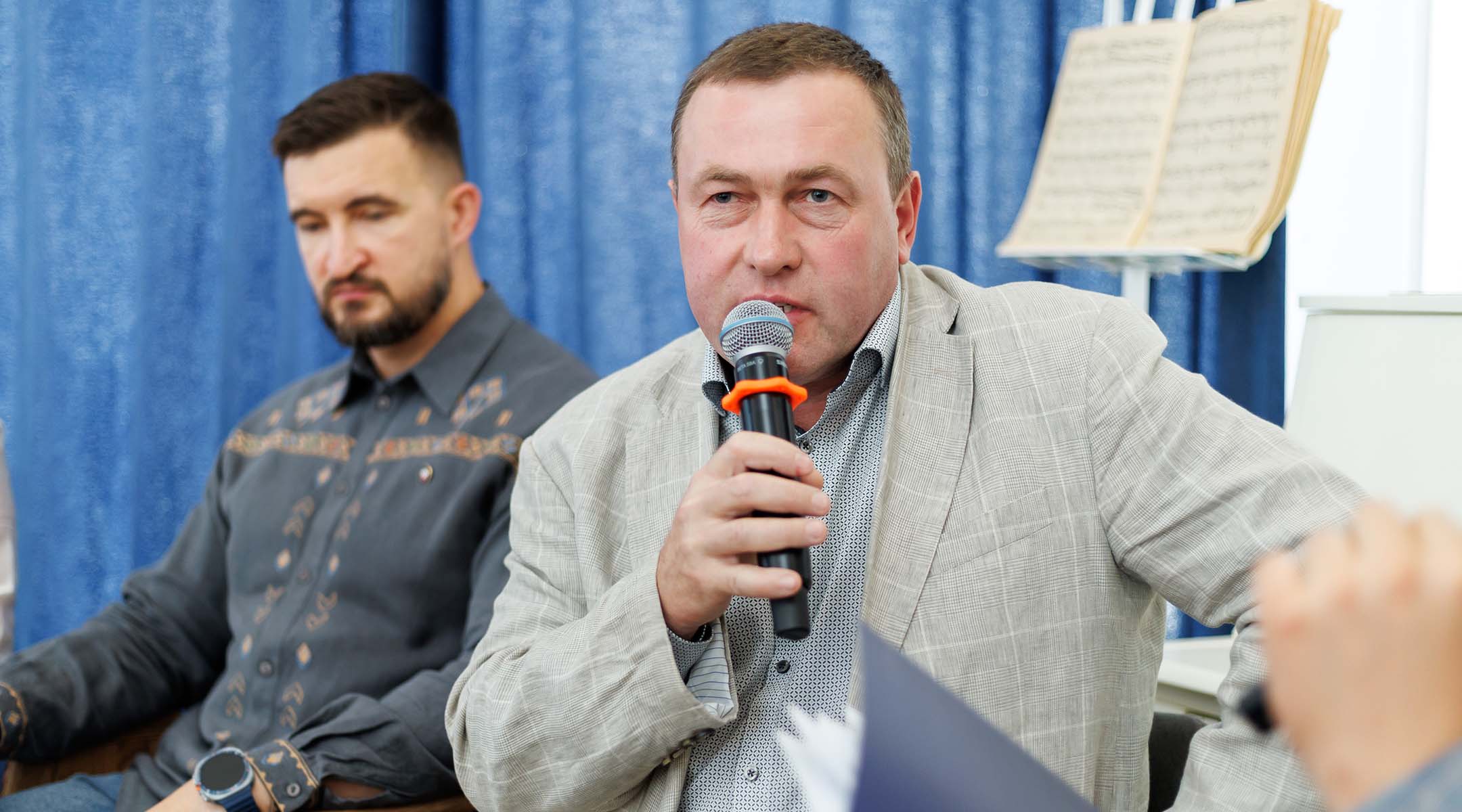
– Do you mean to say that Ukrainian defense industries are primarily focused on markets in the Global South rather than Western markets?
– There are five major centers of special export on the global arms market. I conditionally call such configuration the “Pentagon of Armament”. This is the United States who negotiates and concludes Trump-styled agreements on arms exports. Obviously enough, Ukraine is not going to ever provide any serious competition to the United States in third markets, because this can cause an “interesting” situation in relations of more priority to us.
The second center is united Europe, that is, the European Union plus the United Kingdom. They have their own rules of the game, their own forms and partnerships with other countries, where, in principle, they are potentially waiting for us, but we have to complete a number of “homework tasks” for this to happen.
The third center is the Russian Federation who offers weapons inventories that are similar to ours and is keen to restore its export markets. For now, there is an opportunity for us to play ahead and have time to occupy the respective market niche.
The fourth is China, a country that is leaving by its own rules. And this is our main competitor, because, in addition to the weapons and military equipment products they design and manufacture domestically, they very easily reverse engineer, scale and sell someone else’s designs or ideas, not worrying too much about intellectual piracy or civilized competition in general.
The fifth and final center of this “Pentagon of Armament” is comprised of “young players” such as South Korea, Poland, and Turkey among others. South Korean or Turkish fighter aircraft and UAVs, for example, are currently selling at the same rate as their US-made rivals.
That is, we have to draw our own coordinate system for movement in the right direction within this pentagon, specifying with whom to be friends, against whom to be friends, with whom not to compete, and where to work together.
– Would it be correct to say that the vast majority of potential customers are primarily interested in our know-how rather than specific weapon products?
– First of all, no one in the current coordinate system is eager to see Ukraine as an emerging potent competitor and a potential market leader. In the arms business, there is a stereotype that “money doesn’t smell”.
Relationships and behaviors at the micro level are also changing. On the one hand, we see an active relocation of our manufacturing capacities, jurisdiction shifts, restructuring, the export of technology or ready-made designs, sometimes for next to nothing just to avoid losing our market share. And on the other hand, there is a frantic pressure from technical intelligence and international competitors, the so-called industrial espionage. While previously, it took stealing, hypothetically, a tank or helicopter for one to obtain technology, now it is enough to steal working design documentation or software on a flash drive. It is no secret that at international arms exhibitions, you can already see our guys standing by the booths showcasing brands from foreign countries. The Ukrainian government thus has to ensure intellectual property rights and interests in general are protected, as well as to promote our products precisely at the level of finished product batches, licenses, industrial partnerships, etc.
Surveys find that 85 percent of our manufacturers are weighing relocation or even already taking action to this end. Our research has revealed that 40 percent to 60 percent (depending on the industry sector) of medium to large arms businesses have already “put their eggs” in several baskets. Small businesses are going to follow suit in a short while. And I’m not even talking about startups: anything is sometimes bought up there for ridiculous money.
Therefore, either we leave everything as is, or something must happen that will make weapons and military equipment designers and manufacturers more interested in going through all the stages of a civilized, government-supported entry into the international market, gain competitiveness, master various standards, for example, ISO, STANAG, NIST, obtain the requisite patents and licenses, etc.
The realities are such that particular elements of export already de facto exist. But this is taking place outside the government’s system, often outside the legal field, outside some civilized norms. How to respond to this? By way of example, any specific drone product actually comprises intellectual property of a specific designer organization. That organization owes nothing to anyone. That being said, it cannot sell finished products abroad if they are produced here in Ukraine. Okay, he goes to Poland, rents production facilities there, installs 3D printers, hires the Ukrainians who fled there from war, obtains all the statuses, certificates, licenses as a local manufacturer and, under the guise of agricultural drones, sells combat drones to Third-World markets, for example. This is a simplified example, but the idea is clear.
The good news is that not everything is lost yet. The issue of export renewal is moving forward, albeit slowly. But we just need to move faster, because after the end of hostilities – not war, but military operations – it will become an order of magnitude more relevant. Indeed, we can announce the renewal of export today, but it will not happen so easily tomorrow. It takes months if not years to enter a highly competitive market such as armaments.
After all, in all countries worldwide, there is intelligence supervision of defense-industrial and military technology cooperation projects. This occurs where you need to establish links with the official, say, in an African country who makes the decision to procure a specific weapon product, make him your supporter, so that when the time comes for the contract competition, you win… And there is, as well, information support for defense-industrial projects, diplomatic support, foreign trade support, legal support. What I am leading to is that this is a whole ecosystem that cannot be created in a day. This takes deploying a global network to be able to work in a given specific market by specific rules of the game where it is difficult to be a gentleman, but it is a must.
– And it is the Government that is supposed to lead this process, isn’t it?
– Yes, indeed. It is for a reason that, as a saying has it, it is presidents who sell weapons. We all see how D. Trump flew somewhere and came away with a multi-billion-dollar contract, flew somewhere else and brought along investments. This is normal practice.
Before the war, Ukraine was among the Top Ten of the world’s largest arms exporters. There were certain regional markets where we were really successful. Our official representatives worked there, our diplomats and military attaches had political instructions to support defense industry projects such as Antonov or Pivdenmash (aka Yuzhmash), for example. We retain a positive reputation thanks to previous contracts and an awesome reputation as a country at war. And now more than two hundred of our defense industries have the potential for further growth and development and, in the context of anticipated export renewal, are ready to scale up their production.
Yulia Abakumova, Kyiv
Photo courtesy of organizers of the report presentation on the Ukrainian defense industry’s export market potential

